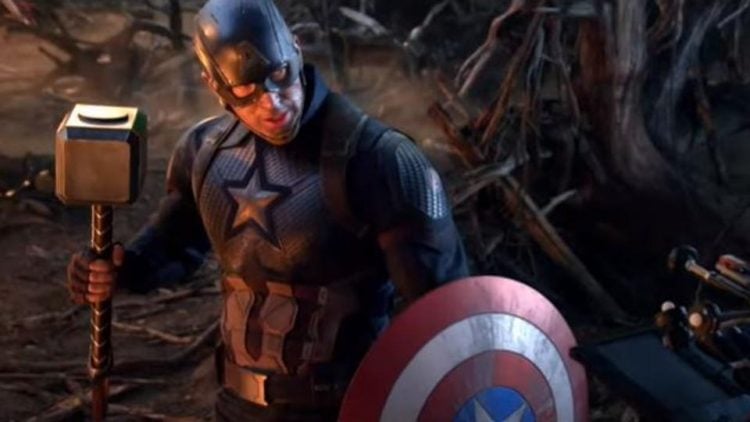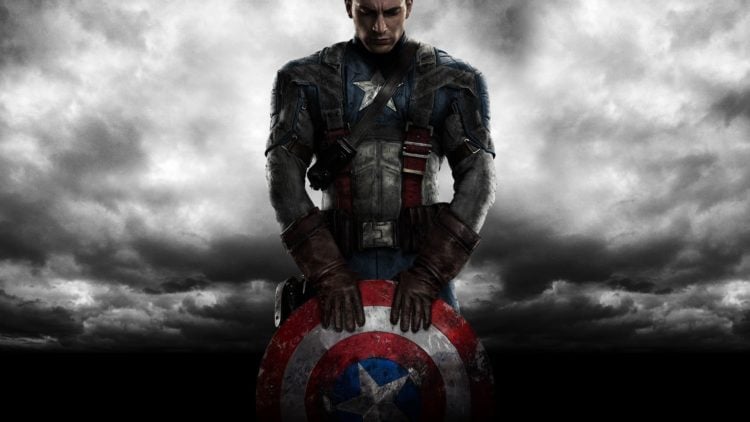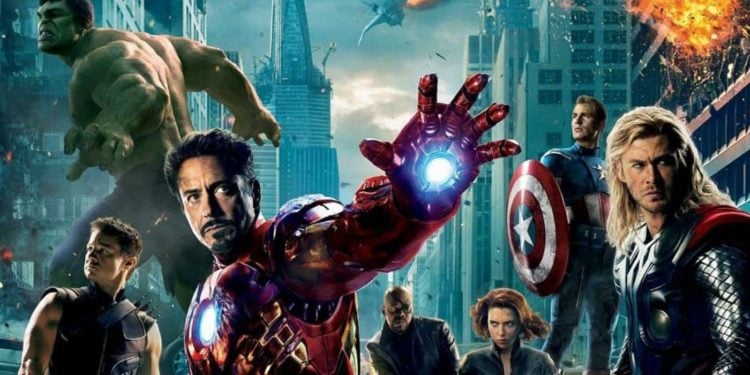
Hi Marvel cinephiles! (And all movie fans!)
Captain America finally became worthy! Oh, wait! He already was. Marvel cinephiles geeked out at the scene in ‘Marvel’s The Avengers: Endgame’ where Captain America finally lifted Mjolnir in an all-out battle against Thanos! Let’s look at the evolution of Captain America from ‘Captain America: The First Avenger’ to ‘Marvel’s The Avengers: Endgame’.
This is a three-part story. In our first part, we look at Captain America’s journey as a super-soldier. In our second part, we look at Captain America’s journey as a superhero. In our third part, we look at Captain America’s journey as a warrior.
Captain America: The First Avenger (2011)

The debut of Captain America was well-received both critically and in its box office performance. It received an 80 percent approval rating on Rotten Tomatoes and grossed $370 million internationally.
In ‘Captain America: The First Avenger’, we encounter a young, skinny Steve Rogers attempting to enlist in the Second World War despite social opposition and disdain at his small frame. He is rejected. He soon volunteers with Sergeant Barnes’ encouragement in the “super-soldier” experiment becoming… Captain America! Yes, ladies and gentlemen! The man with the star-spangled costume, the military equipment, and the vibranium shield was once a skinny kid from Brooklyn who was rejected in an attempt to join the Second World War to fight the Nazi invasion.
What is striking about Captain America’s origin story is the patriotism of the character and the honest patriotic spirit of the Second World War period. Everything in the movie, from the costume to the ensemble cast, to the action pieces, to the war battles, seems like an honest celebration of the American patriotic spirit. Steve Rogers embodies that perfectly and his earnestness drives the first movie in a way that reveals his primary characteristic: his willingness to defend American values and lay down his life in love for his country.
What are those values? Well, first, there is a respect for women found in his respectful but flirtatious relationship with British agent Peggy Carter. Another is to respect the chain of command and always follow orders, even to the death.
Captain America defeats Red Skull who had coveted a Tesseract of unimaginable power in order to further the interests of the Nazi division Hydra.
At the end of the movie, when Captain America’s ship is about to fall into the ice, there is a nostalgic feel to the scene as he comforts Peggy with his loving voice! This is the first sense of one particular characteristic that Captain America brings to the Avengers’ team: a willingness to protect peace and end war on Earth.
Let’s look at how that peace-keeping mission evolves over Captain America’s career in the Marvel Cinematic Universe.
Marvel: The Avengers

‘Marvel: The Avengers’ proved a spectacular ensemble cast demonstrating a ground-breaking formula for the formation of a superhero team: Bring completely unrelated characters around a mysterious threat, have them work out their differences with comedic effect, the characters work together around a common goal at the movie’s second act, then have the superheroes come out on top through team-work but also sheer determination and character development. The Marvel formula has proven very successful over the decade! Over the movie, Iron Man receives the most character development and shines the brightest at the movie’s most determinant moment.
Captain America is definitely the one who is the leader of the Avengers. For good measure! He has the most tactical experience on the battlefield and in times of war and has overcome impossible odds! (He did stay in a coma for nearly 70 years).
It is safe to say that in ‘Marvel: The Avengers’, Captain America evolves two new traits: a growing distrust for the people in power and a dislike for working in teams around a common goal. Initially, Captain America and Iron Man do not hit it off! With the arrival of Thor, things become more complicated but the Thunder god’s presence is one that keeps the Captain grounded. There seems to be little friction between Thor and Captain America, and together with Iron Man, they form ‘The Big Three’ of the Avengers.
Exposure to Tony Stark definitely puts Steve Rogers on a suspicious bent. When the Avengers are enlisted, Captain America originally is eager to co-operate. However, when Loki gets taken into the custody of S.H.I.E.L.D. and the team work on his staff in order to locate the Tesseract, Captain America realizes the larger scheme of the S.H.I.E.L.D. organization. He grows suspicious of his own government and investigates. This is a soldier, a captain, and a war hero, doubting the mission of his country to make the world a better place!
Soon, we find out that S.H.I.E.L.D. is building weapons of mass destruction and locating the Tesseract is part of that larger plan. There is a powerful scene in which the Avengers squabble over the staff and weapons of mass destruction that is played out with great comedic effect. A scene that also foreshadows the future conflict between Captain America and Iron Man, both ideologically and literally!
But whenever duty calls and the mission calls for soldiers, Captain America answers the call! Their squabbling is interrupted by Hawkeye and a team sent by Loki and his agents to retrieve the staff and reveal their master plan: To disband the Avengers and sow seeds of doubt in their hearts.
The assault is thwarted, but with consequences. Soon, an invasion of Earth begins, and the heroes shine brightest at the hour of greatest need team as they band together “to avenge [the Earth]” with super-soldier Captain America as their leader.
